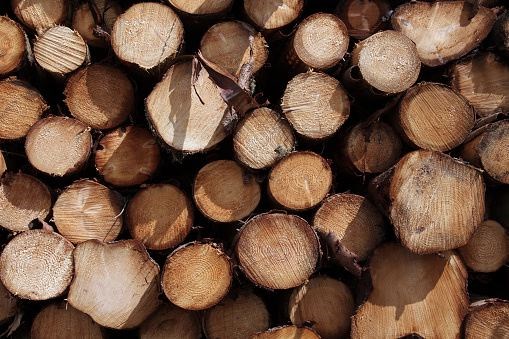There is more energy than ever inside the simple tree.
Humans have burned wood for heat, hewn it for shelter, carved it for tools since the dawn of species existence, but the world is only beginning to understand all the things a tree can do.
The oldest of forestry frontiers is still the newest of frontiers. Few events in the world bring that to brighter light than the International Bioenergy Conference and Exhibition held biennially in Prince George. This event brings out some of the best ideas in the world for research and innovation in the forestry sector, and it consistently shows how the microscope is as much a part of the future of the industry as are chainsaws.
"We have a lot of research and development going on, but it only brings up how much more needs to happen," said one of the delegates coming to Prince George for the event running Wednesday through Friday.
Derek Nighbor is the CEO of the Forest Products Association of Canada, one of the leading agencies advocating for the cutting edge of wood.
"How can we de-risk this and fast-track commercialization of these innovative ideas? The ideas are there, and more are underway. That's what we, in these conversations, have to concentrate on," he said.
The private sector needs the help of government to advance these ideals, Nighbor said.
Yes, companies and their industry associations need to put a lot of skin in that game, but to prop open the doors of science requires policies and legislation that keeps up with the advancements in technology, like building codes that properly reflect the true strength of engineered wood, or investments that keep academic study focused on the molecular structure of tree stems.
Wood has potential to be a replacement for plastic, to be made into medicine, to become a food source, and it will never not be one of the best fibres for construction.
It also takes government to drive the forces of greenhouse gas mitigation and to turn around the negative effects humanity is forcing onto the planet's climate. Trees, said Nighbor, contain big answers to those life-and-death questions.
"The federal government's stated agenda on climate change, and their stated mandate for innovation: there is a powerful linkage there between those two subjects. And we see forest products being an important part of that linkage," he said.
"Let's take a moment to think about the sustainability of the industry, and the world-leading environmental practices that our companies can take credit for here in Canada. We are No. 1 in the minds of the international market for forest practices as they relate to caring for the environment, Canadian forest companies' commitment to sustainable forest practices.
"Whether you are on the political left or right, the forest practices story in this country is one that appeals to you. When I meet with New Democrats or Conservatives or Liberals, the interest is there. The reaction on the global market to what Canada's forest industry is doing is quite compelling and exciting."
It's not empty propaganda, either, said Nighbor, and the proof of why the world is happy with Canada over wood has abundant data boiling out of the Prince George region. The bioenergy systems now in place, turning waste wood into pellets on one hand, but also turning wasted heat into electricity to power the very sawmills and pulp mills that requires that electric load.
There is also a legion of innovations into saving energy on the forest floor, on the harvesting side of the industry, plus improving silviculture and forest management practices that could, it is hoped, make for a healthier forest of the future.
Furthermore, said Nighbor, steel and concrete construction is a creator of enormous amounts of emissions while using wood literally sequesters carbon.
That's what wood is: the physical holding vessel for carbon instead of discharging it into the atmosphere. Wood construction has positive climate effects in its very bones.
Nighbor's association has done a study and produced a set of recommendations it calls 30 By 30 which spells out the sector's own plan for helping the global climate.
"The Canadian forest products industry is pledging to remove 30 megatonnes of CO2 a year by 2030 - more than 13 per cent of the Canadian government's emissions reduction target," he said.
"The area where there is still a big opportunity to realize CO2 savings is at the mills. We have seen the shift to greener technologies and more efficient production practices already dropping down the greenhouse gas output of Canada's milling side.
"We have probably another megatonne or two megatonnes we can account for by 2030, but a lot of work has already been done. It's actually quite exciting to be part of that, and seeing big solutions coming forward."
Nighbor said he is on his way to Prince George for more than one reason. The bioenergy conference was the primary call to action, but there was a human exchange that tipped the decision scales for him.
"Your mayor, Lyn Hall, was one of the first municipal leaders to reach out to us," he said.
"I've met with the Prince George folks here in Ottawa, there is a lot of industry knowledge there, and a lot of desire to see the forest industry not just carry on as it has in the past but really reach new heights and realize new potential."
To attend the conference (held at the Civic Centre) as a delegate or an exhibitor, log on to www.bioenergyconference.org.



